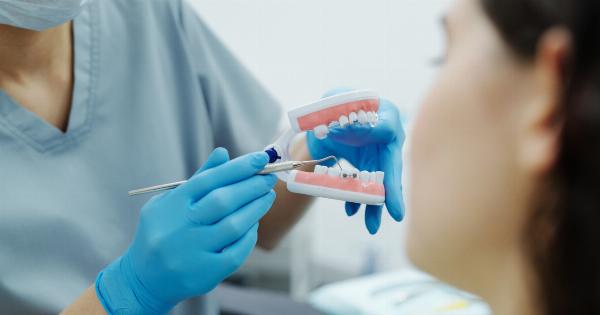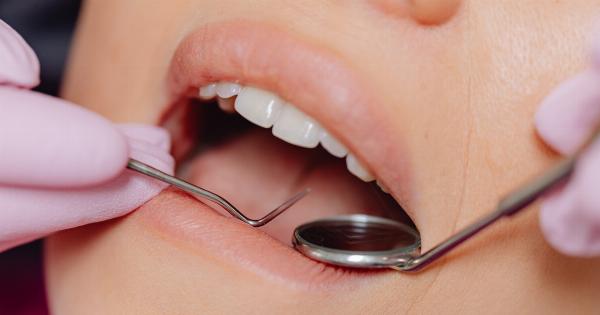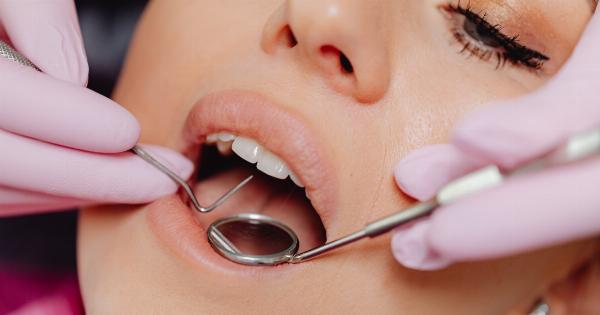Experiencing tooth pain can be incredibly uncomfortable and, in some cases, can indicate a more serious dental issue.
While dentists strive to preserve natural teeth whenever possible, there are certain situations where a tooth extraction becomes necessary. Understanding when a tooth needs to be extracted can help you make informed decisions about your dental health. This complete guide will walk you through the common reasons for tooth extractions and what to expect during the procedure.
Common Reasons for Tooth Extractions
1. Severe Tooth Decay:.
When tooth decay progresses to an advanced stage and cannot be effectively treated with a dental filling or root canal therapy, extraction may be the only viable option.
This often occurs in cases where the tooth has been neglected or left untreated for a long period of time.
2. Impacted Wisdom Teeth:.
Wisdom teeth, also known as third molars, usually erupt between the ages of 17 and 25. However, due to limited space in the mouth, they often become impacted and fail to fully emerge.
Impacted wisdom teeth can cause pain, infection, and even damage surrounding teeth. In such cases, extraction is typically recommended.
3. Dental Crowding:.
Some individuals have limited space in their mouth, which can lead to overcrowding. In such cases, removing one or more teeth can create the necessary space for orthodontic treatment or to alleviate the crowding that may cause bite issues.
4. Periodontal Disease:.
Gum disease or periodontal disease is a bacterial infection that affects the gums and supporting structures of the teeth. If left untreated, the infection can weaken the tooth’s surrounding bone and tissues, leading to tooth loss.
In some cases, extraction may be necessary to prevent the spread of infection to other teeth.
5. Cracked or Fractured Teeth:.
If a tooth has a severe crack or fracture that extends below the gum line, it may not be salvageable. This is especially true if the crack or fracture cannot be repaired with dental bonding, a crown, or root canal therapy.
6. Severe Tooth Trauma:.
Accidents or injuries to the mouth can result in extensive damage to the teeth. If the trauma is severe enough and the tooth cannot be repaired through other treatments, extraction may be the best course of action.
7. Baby Teeth that Don’t Fall Out:.
Most children’s baby teeth naturally fall out to make way for permanent teeth. However, sometimes baby teeth do not loosen or fall out on their own, preventing the permanent teeth from erupting properly.
In such cases, a dentist may recommend extracting the baby tooth to allow the permanent tooth to come in.
8. Orthodontic Treatment:.
In certain orthodontic cases, tooth extraction may be necessary to create the space needed for braces or other corrective measures. Removing one or more teeth can help align the remaining teeth and improve overall bite alignment.
9. Hyperdontia:.
Hyperdontia is a condition characterized by having an excessive number of teeth. To prevent overcrowding and other dental issues, extraction may be required to remove the extra teeth.
10. Risk of Infection:.
If a tooth has become chronically infected or poses a risk of infection, extraction may be necessary to prevent the spread of bacteria and protect overall oral health.
What to Expect During a Tooth Extraction Procedure
If you require a tooth extraction, it is natural to feel a bit nervous about the procedure. However, knowing what to expect can help calm your nerves and ensure a smoother experience.
Here’s a step-by-step guide on what typically happens during a tooth extraction:.
1. Evaluation and X-rays:.
Prior to the extraction, your dentist will conduct a thorough examination of your mouth and may order X-rays to assess the tooth’s position and roots. This evaluation allows the dentist to determine the best extraction method.
2. Anesthesia:.
Your dentist will administer local anesthesia to numb the area around the tooth. In some cases, general anesthesia may be required, especially for more complex extractions or if multiple teeth need to be removed.
3. Tooth Extraction:.
Using dental instruments, the dentist will gently loosen the tooth and separate it from the surrounding tissues. In certain cases, a small incision may be made to aid in the removal.
Once the tooth is sufficiently loosened, it will be carefully lifted out of its socket.
4. Post-Extraction Care:.
After the tooth extraction, your dentist will provide you with specific instructions on how to care for the extraction site. This usually involves biting down on a piece of clean gauze to control bleeding and promote blood clot formation.
You may also be prescribed pain medications or antibiotics, depending on your situation.
5. Healing Process:.
It is normal to experience some discomfort and swelling in the days following the extraction. The healing process usually takes about one to two weeks, during which time the extraction site will gradually close up and new bone and gum tissue will grow.
Preventing the Need for Tooth Extractions
While tooth extractions are sometimes unavoidable, there are several steps you can take to reduce the likelihood of needing one:.
1. Practice Good Oral Hygiene:.
Brush your teeth at least twice a day, floss regularly, and visit your dentist for routine check-ups and cleanings. Maintaining good oral hygiene helps prevent tooth decay and gum disease.
2. Address Dental Issues Promptly:.
If you experience tooth pain or notice changes in your teeth or gums, it’s crucial to seek professional dental care as soon as possible. Early intervention can often prevent the need for extractions.
3. Orthodontic Evaluation:.
If you have concerns about dental crowding or bite alignment, consult an orthodontist to explore your options. Early orthodontic intervention can prevent the need for extractions in some cases.
4. Protect Your Teeth:.
If you play contact sports or grind your teeth at night, wearing a mouthguard or using a nightguard can help prevent dental trauma and fractures.
5. Regular Dental X-rays:.
Dental X-rays can detect potential issues before they become major problems. Regular X-rays allow your dentist to monitor your oral health and make recommendations for necessary treatments before extractions become necessary.
Conclusion
While tooth extractions may sound intimidating, they are often necessary to prevent further dental complications and promote overall oral health.
Understanding the common reasons for extractions and the procedure itself can help alleviate any fears or concerns you may have. By following good oral hygiene practices and seeking prompt dental care, you can minimize the likelihood of needing a tooth extraction. Remember, prevention is the best medicine when it comes to your dental health.





























